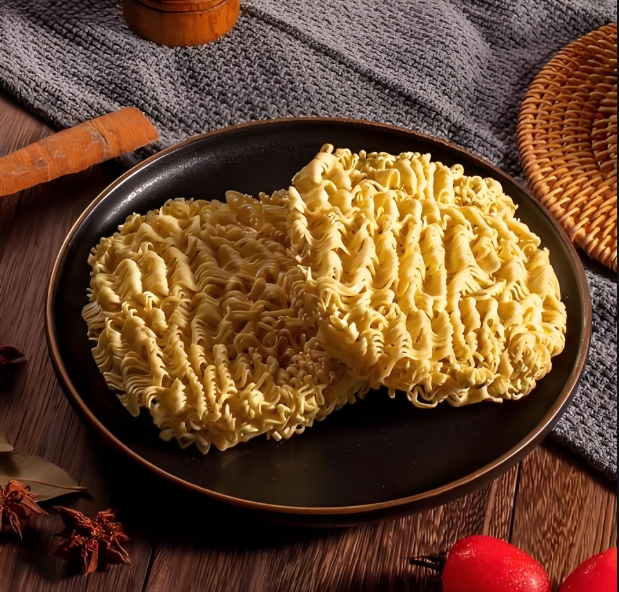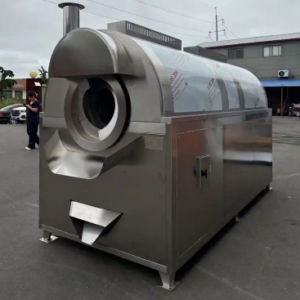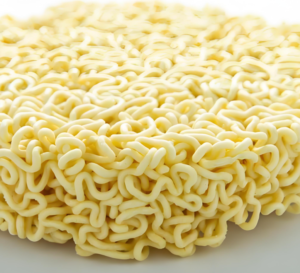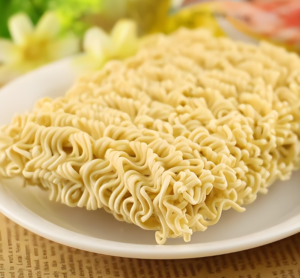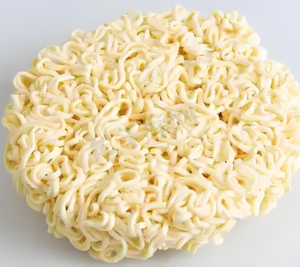<h1>Budgeting for Small-Scale Fried Instant Noodles Production</h1>In the competitive world of foreign trade, small-scale producers of fried instant noodles must master effective budgeting to ensure profitability and sustainable growth. This article explores the key aspects of creating a budget for manufacturing and exporting these popular convenience foods. By focusing on cost management, businesses can optimize resources and penetrate global markets efficiently.
fried instant noodle making machine
ToggleUnderstanding Fried Instant Noodles
Fried instant noodles are a staple in the global food industry, offering quick, affordable meals to consumers worldwide. These products involve frying pre-cooked noodles in oil to extend shelf life and enhance flavor, making them ideal for export to regions with diverse dietary needs.
The market for fried instant noodles has grown steadily, driven by urbanization and busy lifestyles. According to industry reports, exports from countries like China, Thailand, and Indonesia dominate, with annual revenues exceeding billions. For small-scale producers, understanding this landscape is crucial for accurate budgeting.
Key factors influencing demand include taste preferences, packaging innovations, and health trends, such as low-sodium options. Businesses targeting foreign trade should analyze these to align their production budgets with market opportunities.
Key Components of the Production Budget
A comprehensive production budget for fried instant noodles breaks down into several core elements. This ensures that small-scale manufacturers can track expenses and maintain quality while keeping costs competitive for international sales.
Raw Materials Costs
Raw materials form the largest part of the budget for fried instant noodles. Essential ingredients include wheat flour, palm oil for frying, flavorings, and preservatives. Sourcing high-quality materials from reliable suppliers is vital to meet export standards.
For instance, wheat flour might cost $0.20-$0.50 per kilogram, depending on global commodity prices. Oil prices can fluctuate, adding 10-20% to overall material expenses. Small producers should negotiate bulk deals or explore local sourcing to reduce costs.
Budgeting tip: Allocate 40-50% of your total production budget to raw materials. Conduct regular market research to anticipate price hikes, such as those caused by agricultural disruptions, ensuring your business remains resilient in foreign trade scenarios.
Labor Costs
Labor is another critical budget component, involving skilled workers for mixing, frying, packaging, and quality control. In small-scale operations, this might include 10-20 employees per shift, with costs varying by region.
In Southeast Asia, labor costs could range from $200-$500 per worker monthly, including benefits. For export-oriented businesses, training staff on hygiene and safety standards, like those from the FDA or EU regulations, adds to the budget but enhances product appeal.
To optimize, consider automation for repetitive tasks, which can cut labor expenses by 15-25% over time. This not only improves efficiency but also supports scalability in international markets.
Equipment and Machinery Expenses
Investing in reliable equipment is essential for frying and packaging instant noodles. Basic machinery includes fryers, dryers, and sealing machines, with initial costs ranging from $10,000 to $50,000 for small-scale setups.
Maintenance and upgrades should be factored into the annual budget, typically at 5-10% of equipment value. For foreign trade, ensure machines comply with international standards to avoid delays in exports.
Long-term budgeting advice: Lease equipment initially to minimize upfront costs, then purchase as production scales. This strategy has helped many B2B exporters reduce financial risks while entering new markets.
Packaging and Branding Costs
Packaging plays a key role in protecting fried instant noodles during transit and appealing to buyers. Costs include materials like plastic wrappers, boxes, and labels, which can account for 10-15% of the total budget.
Branding elements, such as custom designs and multilingual labels, are crucial for export success. In competitive markets, investing in eco-friendly packaging can differentiate your product and attract premium buyers.
Effective budgeting here involves partnering with suppliers who offer bulk discounts. Aim to allocate funds based on projected sales volumes, ensuring that packaging enhances shelf life for long-distance shipping.
Overhead and Operational Expenses
Beyond direct production, overhead costs encompass utilities, facility maintenance, and administrative needs. These often represent 20-30% of the overall budget for small-scale fried instant noodle manufacturers.
Utilities and Energy Costs
Energy consumption for frying and drying processes is a major overhead expense. In a typical setup, electricity and fuel might cost $1,000-$5,000 monthly, depending on production scale and energy efficiency.
To manage this, adopt energy-saving technologies like LED lighting or efficient fryers, which can reduce bills by up to 20%. For exporters, tracking these costs helps in pricing products competitively in energy-sensitive markets.
Regular audits of utility usage ensure that your budget aligns with sustainability goals, a growing concern in global trade agreements.
Marketing and Distribution Expenses
Marketing is vital for reaching international buyers, with costs including online ads, trade show participation, and distributor fees. For small producers, this might total $5,000-$15,000 annually.
Distribution involves logistics like shipping and warehousing, which can add 10-15% to the budget. Partnering with freight forwarders familiar with food export regulations streamlines this process.
Strategic tip: Focus digital marketing on SEO-friendly platforms to target B2B buyers. This approach has proven effective for many instant noodle exporters in expanding their reach without overspending.
Financial Planning and Forecasting
Effective financial planning involves forecasting revenues and expenses to achieve profitability. For fried instant noodles, this means using tools like spreadsheets or software to model scenarios based on market trends.
Start with a break-even analysis: Calculate the production volume needed to cover costs, often around 10,000-20,000 packs monthly for small operations. Factor in export tariffs and currency fluctuations to avoid surprises.
Seek funding options like loans or grants for food exporters, which can cover initial budgeting gaps. Regularly review and adjust your budget quarterly to adapt to changes in global demand or supply chain disruptions.
Advanced strategies include implementing cost-control measures, such as just-in-time inventory, to minimize waste. This not only boosts margins but also positions your business as a reliable partner in foreign trade.
Frequently Asked Questions
Below are common questions from businesses involved in fried instant noodles production and export.
What are the main factors affecting raw material costs?
Raw material costs are influenced by global commodity prices, seasonal harvests, and supplier negotiations. Monitoring these can help keep your budget under control.
How can small producers reduce labor expenses without compromising quality?
Invest in training and automation to improve efficiency, potentially cutting costs by 15-25%. This ensures compliance with international labor standards.
What is the typical ROI for fried instant noodles exports?
ROI can range from 20-50% annually, depending on market demand and pricing strategies. Accurate budgeting is key to maximizing returns.
How do I account for currency fluctuations in my budget?
Use hedging tools or forward contracts to stabilize costs. This is especially important for exporters dealing with volatile currencies.
What regulatory costs should I include in the budget?
Factor in certifications like ISO or HACCP, which might add 5-10% to initial expenses but are essential for market access.
Conclusion
In summary, mastering the budget for small-scale fried instant noodles production is essential for success in foreign trade. By carefully managing raw materials, labor, equipment, and overheads, businesses can achieve cost efficiency and competitive pricing. With strategic financial planning and adaptation to market trends, producers can not only sustain operations but also expand globally, delivering value to customers and stakeholders alike.

